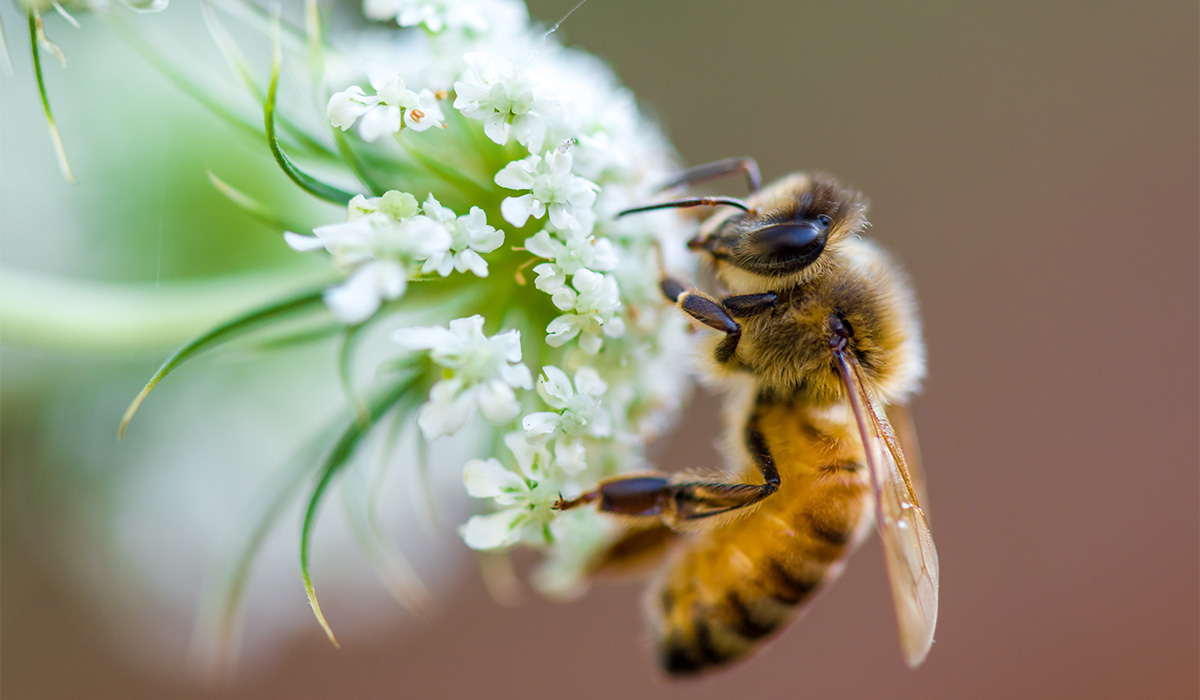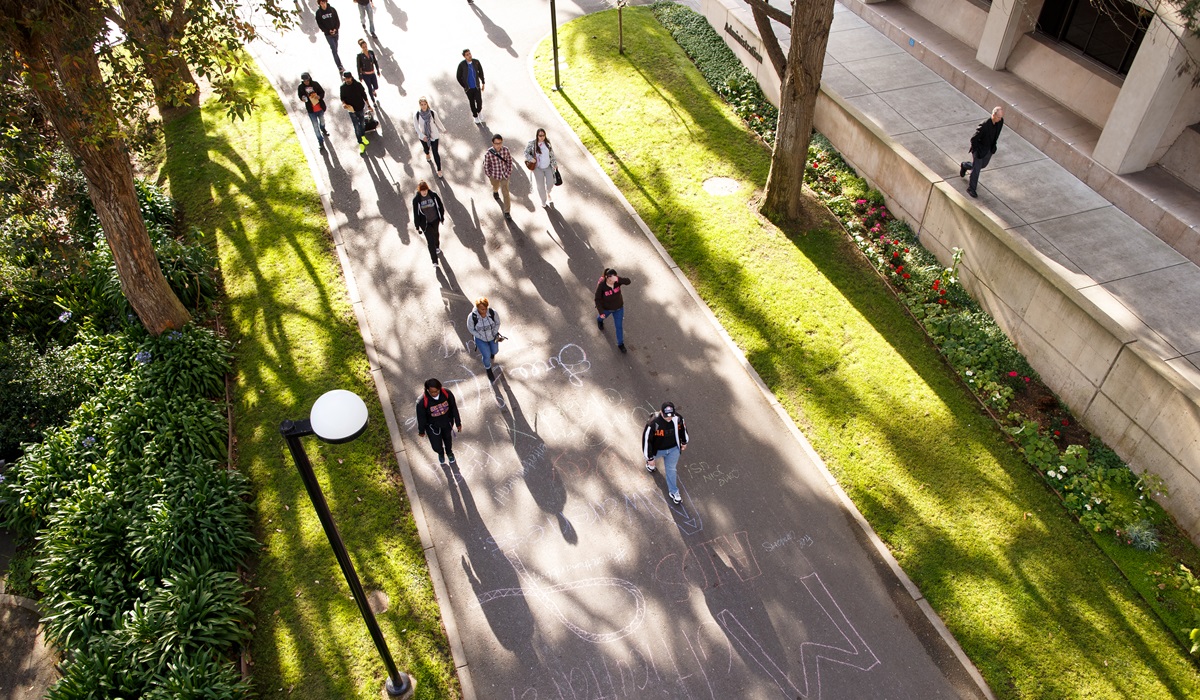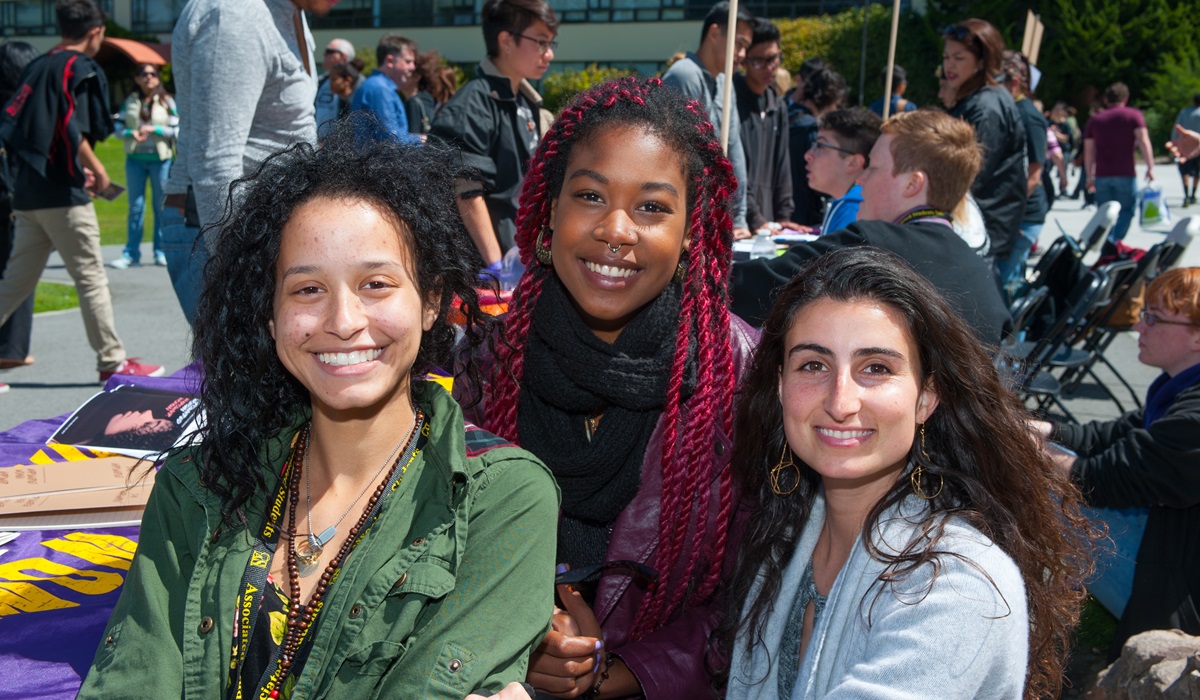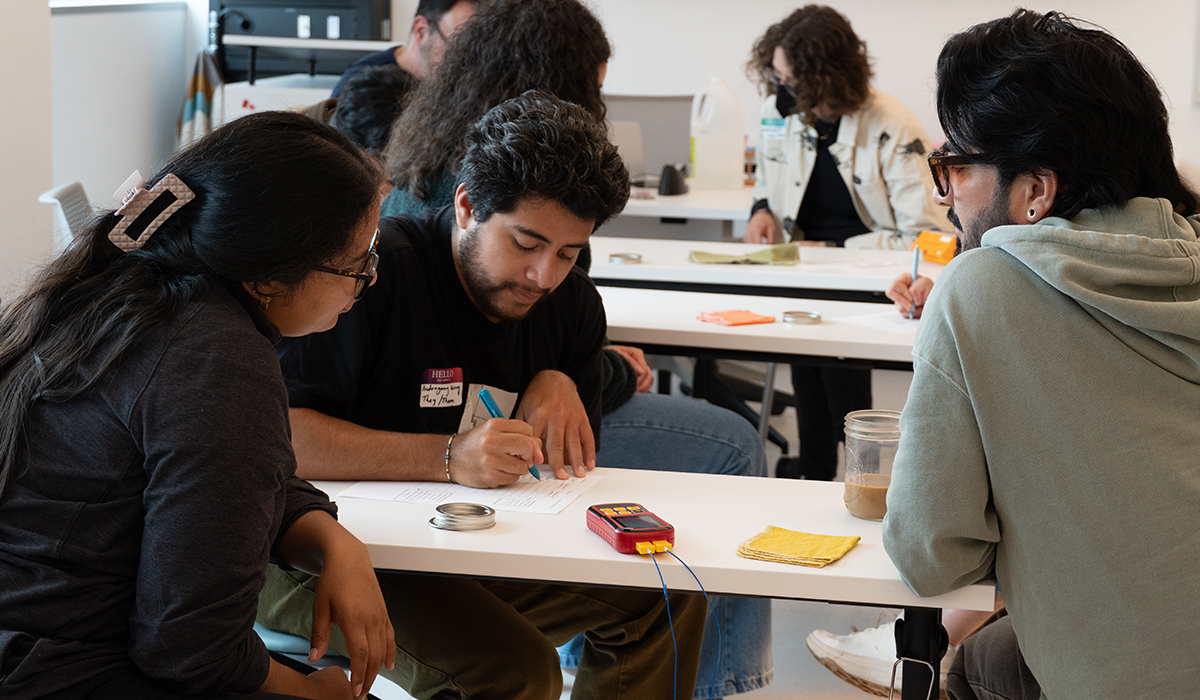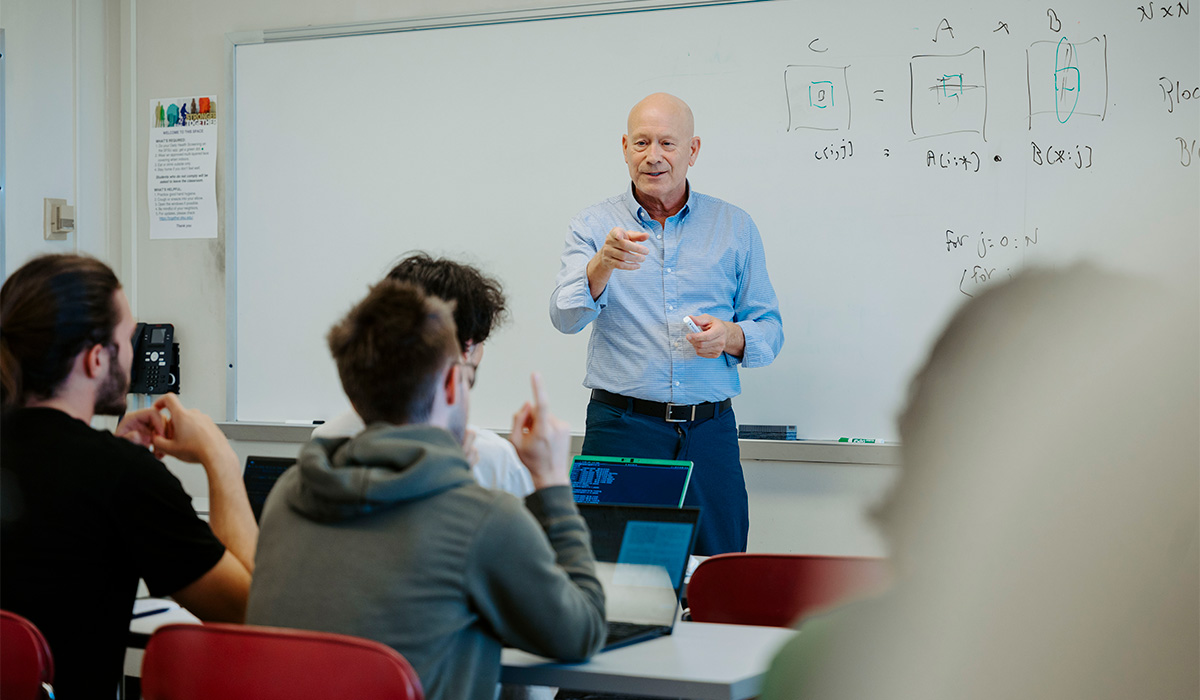Student researchers investigate possible connection between fungal pathogen and frog mating
What noise does a frog make? Many of us would say “ribbit, ribbit.” Funnily enough, the Pacific tree frog (aka Pacific chorus frog) is the only species that really ribbits. (Listen to the variety of “peep,” “waaaaaaa,” “pa-tank,” and more sounds from other species on AmphibiaWeb.) Given how widespread Pacific tree frogs are in California, there’s a chance you’ve seen or heard their ribbits yourself.
During mating season, female frogs in this species choose males based on variations in their call — something scientists find intriguing from an evolutionary standpoint. “If all females have the same preference for type of call, then why haven’t all males evolved to have the exact call and be uniform?” said Julia Messersmith (M.S., ’21). “One theory is the Hamilton-Zuk hypothesis.”
The hypothesis connects male frog calls to their possible resistance to parasitism, a serious global problem facing amphibians. Messersmith studied this hypothesis for her master’s thesis at San Francisco State University and published her findings in Behavioral Ecology and Sociobiology. She and two other SFSU students co-authored the paper with their faculty advisers, SFSU Biology Professor and Department Chair Vance Vredenburg and Associate Professor Alejandro Vélez (now at the University of Tennessee, Knoxville).
The 40-year-old Hamilton-Zuk hypothesis posits that male frogs’ mating call traits (or plumage traits in birds) are related to their health, specifically their resistance to parasitism. Like other amphibians, Pacific tree frogs are in danger of contracting Batrachochytrium dendrobatidis (Bd), a fungal pathogen killing amphibians worldwide. If the Hamilton-Zuk hypothesis is right, it’s possible that female frogs are preferentially choosing the calls of “healthier” males. Although Bd infection is normally lethal, Pacific tree frogs sometimes fare better than other species — but this makes them effective carriers for disease who can spread the pathogen to other amphibians via water or direct contact.
The team’s research showed that the level of infection did affect the male frog calls. Males with higher levels of infection had calls with faster pulse rates and therefore shorter duration; animals with lower levels of infection had slower pulse rates. However, female frogs did not necessarily show a preference for male frogs with lower levels of infection.
“I think the Hamilton-Zuk hypothesis holds up in some systems but not in others. I think it’s important to test it in every system you can because it’s not an end-all-be-all theory you can use for everything even though it’s still taught in disease ecology classes,” said co-author Kurt Lutz (B.S., ’17; M.S., ’20), now a Ph.D. student at Purdue University. The knowledge from this recent paper informed how he taught this hypothesis in a Purdue class.
“This is one of several hypotheses for female choice,” Messersmith explained. “It is something still discussed a lot. There are still a lot of questions to be answered, so any little piece of evidence we get is useful.”
For this project, Messersmith collaborated with Lutz and Esther Clemence Azar, both SFSU undergrads at the start of the project. Messersmith and Azar, both in Vélez’s lab, did field work while Lutz helped with the molecular work to detect and measure Bd infection. While Azar is still working on the project as a master’s student, Lutz moved on to study amphibians as a Ph.D. student.
Back in 2017, Azar was a City College of San Francisco student interested in veterinary school and college-level research. She applied to SFSU’s Bridges to Baccalaureate program after her brother and sister both had positive experiences doing research there. This was when she first met Vredenburg and began learning about Bd and amphibians. She eventually met Vélez and was excited to work in his lab.
“I decided that I didn’t want to be a veterinarian anymore. I really liked this science and asking a question and developing [a research project]. I found out that the [Student Enrichment Opportunities] Office scholarships continued throughout undergrad and grad school,” Azar explained, adding that these programs helped her along her SFSU journey and help give her flexibility to manage both personal and science life.
For Lutz, Messersmith’s project was one of several collaborations he worked on while at SFSU. But he says he wouldn’t have even been in the position to help if it wasn’t for Vredenburg giving him the chance to learn and become proficient in particular lab techniques. Lutz joined Vredenburg’s lab as an undergrad who was struggling and moving away from his goal of pursing a Ph.D. He joined the lab — and did his master’s degree — hoping to help course correct and develop the extensive research experience he needed to achieve his goals.
Researchers used swabs to collect skin samples to test for disease. Photo credit: Kurt Lutz
Photo credits: Julia Messersmith, Esther Clemence Azar and Kurt Lutz (pictured left to right).
“[Vredenburg] had a lot of trust in me and a lot of the undergrads in his lab. He let us do things that maybe wouldn’t be done in other labs, but I think totally could be done by a lot of undergrads,” Lutz said. As he’s progressed in his own career, he says that level of trust in undergrads is not always the case elsewhere. As an SFSU graduate student, his research experience even led him to collaborate with H.T. Harvey & Associates — a consulting firm providing ecological support to public agencies, private entities and nonprofits — and get a job with Applied Technology and Science, another consulting firm in the area.
“SF State is such a beautiful place for a growing scientist. They really allow you to reach your maximum potential,” Azar said. “They are there for you and want you to succeed.”
Latest SF State News V2
- SFSU undergrad research sheds light on zombie beesAn in-class, on-campus student project explores the impact of a parasitic fly on honeybees
- SFSU named a national leader in helping students move up in lifeThe Wall Street Journal recognizes SFSU as one of the top 25 schools in the nation for social mobility
- Gilead Innovation Initiative opens doors for SFSU student scientistsThe new initiative provides stipends, lab support and opportunities for first-time and emerging researchers
- Discover 2025: See what makes life brighter at SFSU on Oct. 18Prospective students and families can explore campus, meet faculty and students, and learn how SFSU prepares graduates for success
- SFSU offers full scholarships for first-of-its-kind PK-12 certificate in climate justice educationStudents participate in the inaugural cohort for the Graduate Certificate in PK-12 Climate Justice Education program that started summer 2025.
- SFSU is first CSU campus to join IBM Quantum NetworkIBM quantum resources open doors for hands-on learning and workforce readiness








